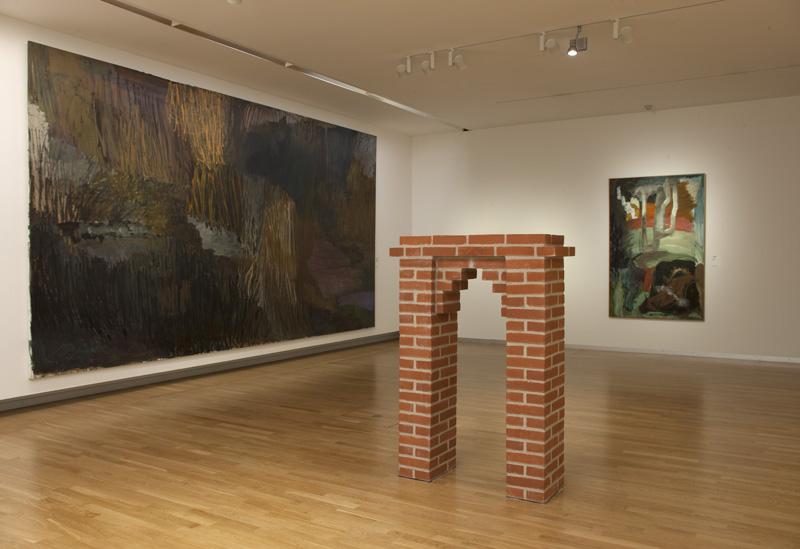The SMK, the National Gallery of Denmark, expands its collection with four brick sculptures by Per Kirkeby.
As one of Denmark’s most important artists Per Kirkeby (b. 1938) is strongly represented at the SMK. With support from the New Carlsberg Foundation, the museum has now acquired the four brick sculptures Kopenhagen I–II(1965/66), Essen VIII (Säulenstumpf) (1977) and Essen IX (Tor) (1977) for its permanent collection.
From object to monument
Today, many of Per Kirkeby’s site-specific brick monuments are present in the public realm. However, his experiments with the unassuming and ubiquitous material began as early as the 1960s and later became a recurring format in the artist’s practice. Kopenhagen I–II are among Kirkeby’s very first brick sculptures. Constructed as stelae of loosely stacked bricks, the early sculptures appear as structural studies of the basic conditions of the material. Their serial character and cubic shape reflect their kinship with 1960s American minimalism, which soon became an important source of influence, both internationally and in the Danish art scene.
From the 1970s the sculptures took a different turn after a trip to Mexico that brought Kirkeby into contact with ruins from the Mayan culture. During this decade, his works grew in size and took on a more symbolic and ornamental character. Essen VIII (Säulenstumpf) sparks associations to the iconic Meso-American step pyramids, while Essen IX (Tor), as suggested by the German subtitle, is intended as a portal that defines and frames the surrounding space. In contrast to the stringent idiom of the 1960s, inspiration during the 1970s often came from architecture, resulting in sculptures shaped like free-standing columns, arches, portals and figures. That in turn planted the seed for the large, more site-specific installations of the 1980s and 1990s, for example at Humlebæk Station (1994), in Stuttgart (1987) and in Gothenburg (1992).
Traces of art history
The brick sculptures not only articulate the varying themes and experiments in Per Kirkeby’s unique practice but also, in a broader perspective, represent key developments in Danish art history from a period when the exchange with international trends flourished, and Danish art received global exposure. In 2017 the New Carlsberg Foundation thus donated three of the artist’s brick sculptures to the Tate Modern in London. Read more here.



